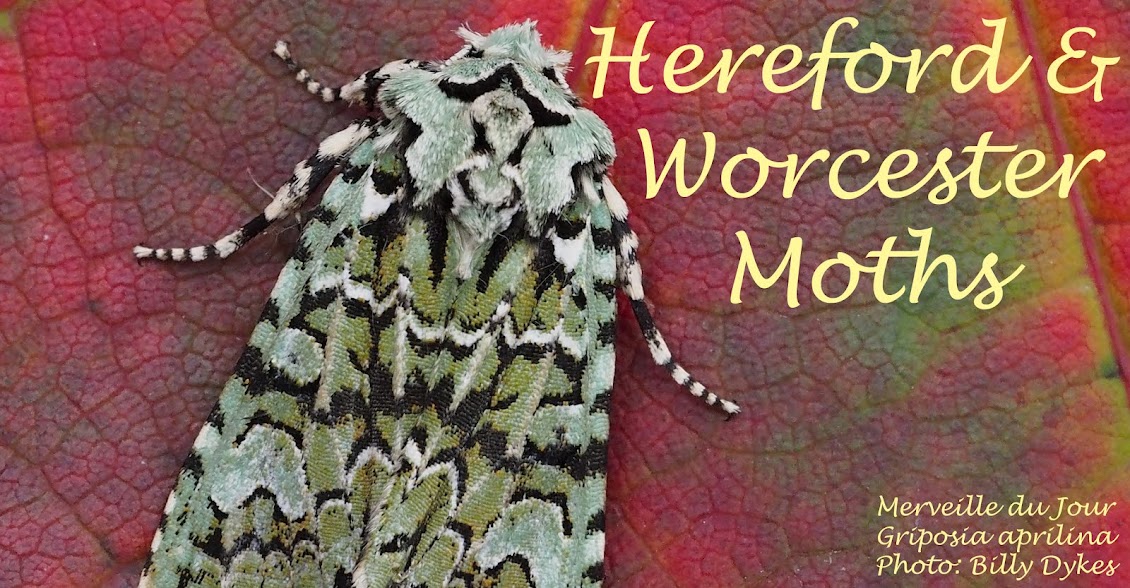Found on the house wall this evening, must have missed it when checking the trap on the patio this morning. Not seen one before but pretty sure it is Barred Umber. A nice and unexpected find.
 |
| Barred Umber |
A few days ago I caught this micro which I think is either the dark form of Prays fraxinella or Prays ruficeps (which I favour). However a brief search on the internet only ended up confusing me. Any opinions?
 |
| Prays ruficeps ? |
Like many people I have found trapping a little frustrating at times with poor overnight conditions but May has had one or two good nights with 40 species each on the nights of 8th and 11th when we had good daytime temperatures and the garden list is up to 118 species to date compared to last years 115 by end of May. So after a very poor April May has picked up, but I have used more traps and trapped more nights to achieve that.
Last night I had 26 species over 4 traps ranging from 2 in one (rather exposed ) actinic trap and 17 species in a more sheltered MV. There were 6 new species for the year and that is typically what I have found, Not huge numbers but a steady flow of new arrivals some a few weeks later than last year, some about the same and some much earlier. Not sure what conclusions to draw except there are moths out there and as the conditions improve or they cannot wait any longer then they will emerge (hopefully). This is only my 2nd year at Dodford so this no great historical statistical analysis!
I am also lucky to have a large garden with varied habitats so I can put out 3 or 4 traps and get different results which helps even out the peaks and troughs. Just my thoughts
Pete Smith
Dodford

Hi Pete, I would agree with your id of P. ruficeps. As I understand it, the dark form of P. fraxinella would NOT have such a strongly contrasting head colour and WOULD show some semblance of the wing pattern of the normal form (not that it would be visible in the photograph).
ReplyDeleteThanks Patrick, I had looked for patterning on the wing but it appeared uniform which was why I was leaning towards P.ruficeps. Coincidentally I had another in the trap this morning and it was pretty fresh. I made a point of examining it closely with a 10x lens from all angles in varied light conditions and the wing was definitely "unicolourous" with no hint of any underlying pattern, so I am happy it is P.ruficeps.
ReplyDeletecheers
Pete
I remember asking John Langmaid about the 2 species and his reply was that ruficeps means orange head. I think there are 3 indicators - size, unicolourous wings and orange head.
ReplyDeleteThanks Peter
ReplyDelete